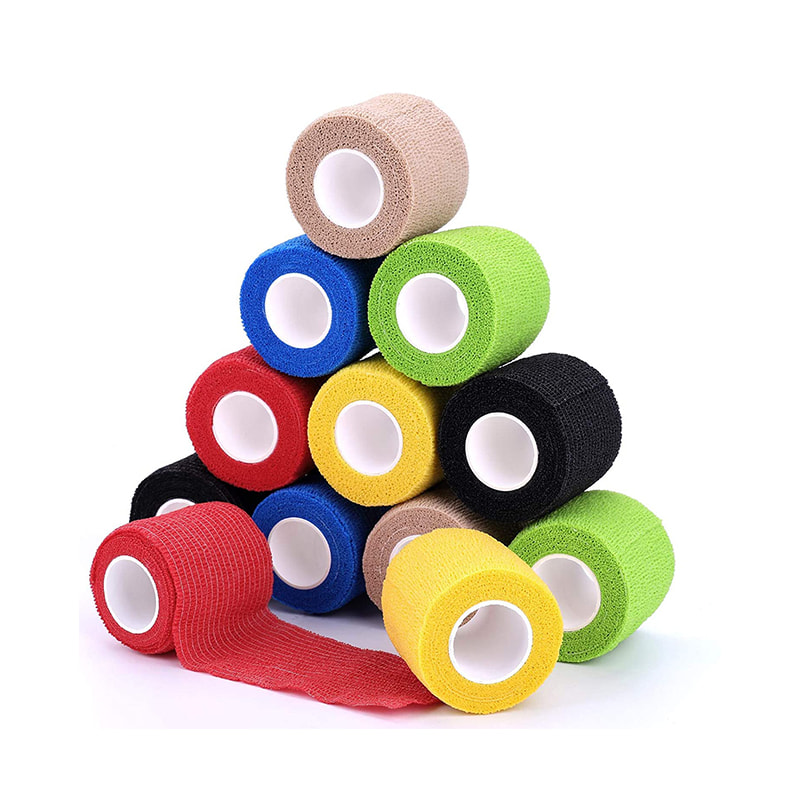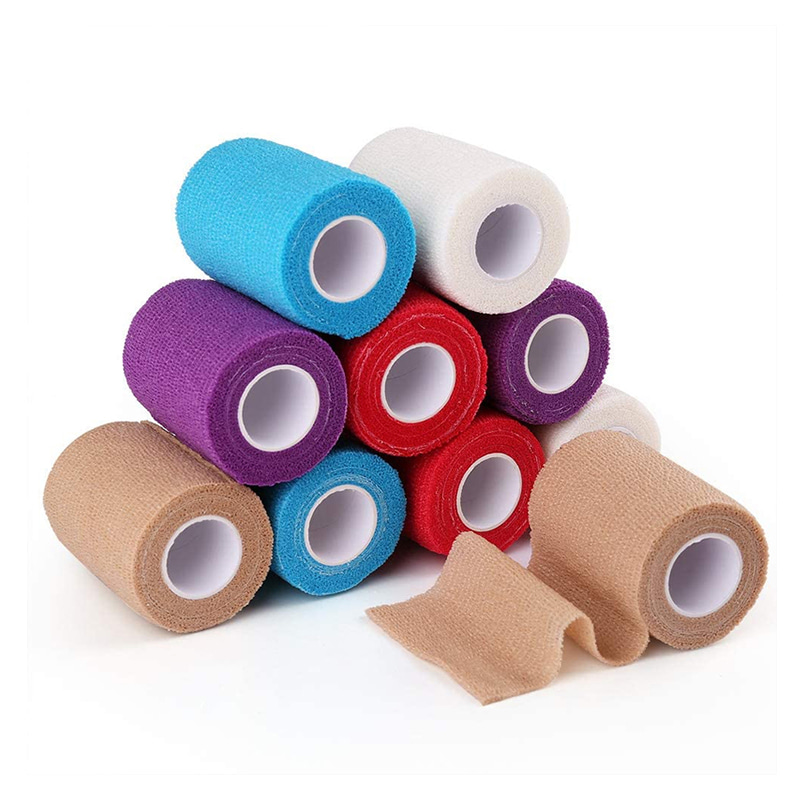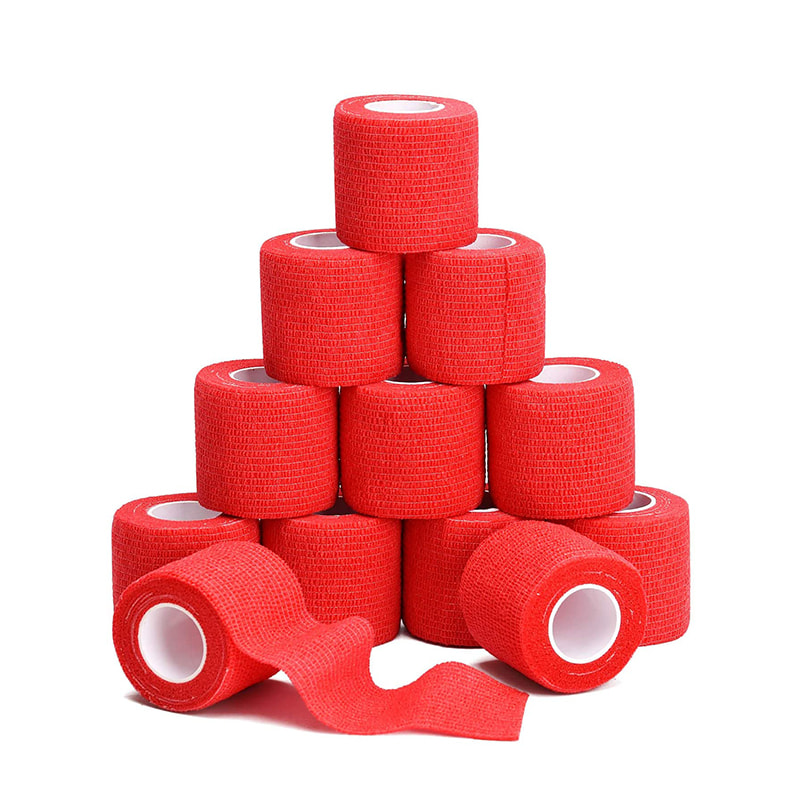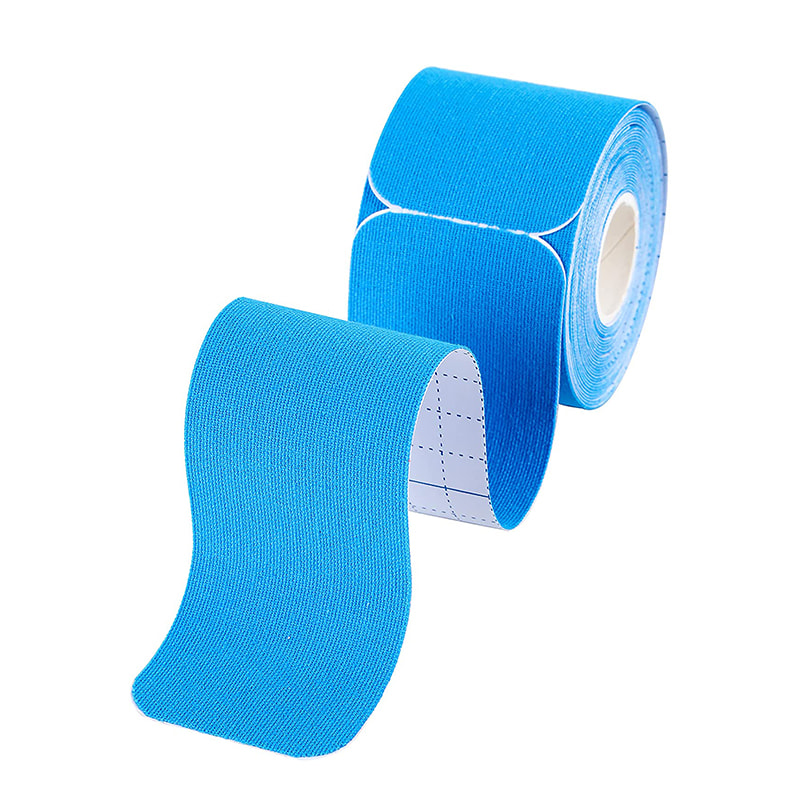Self-adhesive bandages can play a crucial role in immobilizing injured areas and reducing the risk of further damage during sports through several mechanisms:
Self-adhesive bandages wrap provide support to injured muscles, joints, or ligaments, helping to stabilize the area and prevent excessive movement that could lead to further injury.bandages wrap can apply a controlled amount of compression to the injured area, which can help reduce swelling and support blood flow, aiding in the healing process.

By providing support and compression, self-adhesive bandages wrap can help alleviate pain by reducing muscle strain and minimizing the impact of movement on the injured area. Bandages can limit the range of motion in a joint, preventing it from moving beyond a certain point, which can be beneficial for injuries that require rest and immobilization.They can protect the injured area from external impacts or friction, which might otherwise aggravate the injury.
Specific taping techniques, such as the "figure-eight" or "spiral" wraps, can be used to immobilize joints and provide additional support to injured areas. Some self-adhesive bandages are designed to be breathable, which can help prevent skin irritation and maceration, especially important in the context of sports where sweat and moisture are common.

The self-adhesive property ensures that the bandage stays in place during physical activity, providing consistent support without the need for frequent reapplication.Self-adhesive bandages are easy to apply and can be quickly adjusted or removed as needed, making them convenient for use during sports. They can be cut to size and shape, allowing for a customized fit around different body parts and types of injuries.
While self-adhesive bandages can provide temporary support and protection, they are not a substitute for professional medical advice and treatment. Athletes should consult with healthcare professionals for proper diagnosis and treatment plans for injuries.


 English
English Español
Español русский
русский Français
Français Deutsch
Deutsch By Admin
By Admin
























